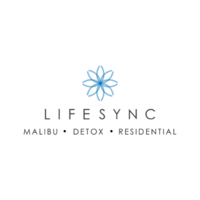How to Safely Quit Alcohol

By Geoffrey A. Booth, M.D., Medical Director, LifeSync Malibu
You wouldn’t think that something that is readily available for sale in your local grocery store could end up causing so much devastation in your life. But that is indeed the case when it comes to alcohol. These easily accessible, inexpensive alcohol products are stacked up in neat little rows just waiting to be purchased and consumed.
The way each individual responds to alcohol in his or her system can vary widely. Each person’s physiology is unique, meaning that some may not have any problem having a beer each evening after work, while others cannot control their escalating consumption.
If you have developed an alcohol use disorder, and want to stop drinking, keep reading to learn how to safely quit alcohol.
Alcohol Dependence versus Alcohol Addiction
Alcohol dependency is the condition that develops over time as brain chemistry and neural pathways become altered by the continuous exposure to alcohol. As tolerance increases, consumption follows suit, leading to dependency. Once dependent on alcohol, the individual will become sick with withdrawal symptoms when the effects of alcohol wear off. This traps the person into a constant cycle driven by cravings, alcohol seeking behaviors, and then withdrawals.
Alcohol addiction is the state at which the individual has acquired a compulsion to drink. This is the result of the brain’s reward system basically tricking you into believing you must continue the disordered drinking, despite the negative consequences it is causing in your life. Many times, there is a co-occurring mental health disorder, such as depression or anxiety disorder, associated with alcohol addiction.
Do You Have an Alcohol Use Disorder (AUD)?
An alcohol use disorder is a condition featuring an inability to stop or control alcohol intake, despite the negative consequences experienced. AUD encompasses a spectrum of disease severity, diagnosed as a mild, moderate, or severe AUD. About 14 million U.S. adults struggle with AUD.
To diagnose AUD, clinicians use a series of questions. Based on the number of questions answered “yes” they can then assess the severity of the AUD. These questions include:
- Do you drink more or for a longer period than you intended?
- Have you tried to cut down on alcohol, or stop drinking, but couldn’t?
- Do you spend a lot of time drinking, or getting over its after effects?
- Do you ever want to drink so badly you cannot think of anything else?
- Does your drinking prevent you from taking care of your daily responsibilities at home or at work?
- Do you continue to drink even though it is causing distress in your relationships?
- Have you chosen drinking over spending time on activities you used to enjoy?
- Has your drinking caused you to endanger your health or wellbeing through impulsive or reckless actions?
- Do you have memory blackouts?
- Do you continue to drink even though it makes you depressed or anxious?
- Do you have to drink more alcohol to get the effects you desire?
- Do you experience withdrawal symptoms when the effects of the alcohol wear off?
How to Quit Alcohol Safely
If you have the symptoms of AUD, committing to sobriety begins the recovery process that can lead you out of this dangerous disorder. The decision to quit drinking doesn’t always occur in a straight line. There may be many dips and turns before you are ready to take that first step and give up alcohol.
When you arrive at that important pivot point you will need to plan for detox and rehab. The detox process is the first chapter in your recovery story, during which the body rids itself of the alcohol. After you quit drinking, the detox process takes about 5-10 days, depending on the severity of the AUD.
Those who attempt to quit alcohol abruptly and tough out the detox and withdrawals on their own are putting their health at risk. There are some severe alcohol withdrawal symptoms that can emerge, often with no notice, about 3 or 4 days into the detox. For this reason, alcohol detox should only be attempted while under the close supervision of a medically trained detox team.
What to Expect During Alcohol Detox
Once you quit drinking, your body will begin to exhibit the symptoms of withdrawal within 6-12 hours. As these emerge, the medical detox team will manage the severity of the symptoms with medications. This usually involves the use of benzodiazepines to help reduce the risk of seizure, and also to aid sleep and minimize anxiety. Over-the-counter medications are provided for managing nausea, fever, and headache.
Alcohol detox occurs in three distinct stages:
Stage 1: During this first stage, withdrawal symptoms include sweating, nausea, vomiting, hand tremors, irritability, and sleep difficulties.
Stage 2: The second stage occurs on days 2-4 and features peak withdrawal symptoms, such as increased heart rate, elevated blood pressure, fever, mental confusion, mood swings, alcohol cravings, anxiety, and depression. During this stage there is a risk in 5% of individuals for the more serious alcohol withdrawals called the delirium tremens.
Stage 3: The final stage lasts about 3-5 days and features subsiding symptoms.
Alcohol withdrawal symptoms may include:
- Irritability
- Nausea
- Vomiting
- Sweating
- Headache
- Agitation
- Insomnia
- Anxiety
- Confusion
- Hallucinations
- Disorientation
- Seizures
- Delirium tremens
In addition to the medical interventions received to assist you during detox and withdrawal, the detox team also is available to provide psychological support.
After Detox You’ll Need Treatment
While completing alcohol detox is a laudable achievement, sobriety cannot be sustained without undergoing rehabilitation. The treatment process involves a collection of therapeutic techniques and activities that work in tandem to help you make important changes in the way you respond to stress and other triggers. Only by making these fundamental changes can you sustain sobriety long term.
Treatment elements include:
- Psychotherapy. A variety of evidence-based therapies are central in guiding the individual toward positive change. Therapy is provided in individual and group formats, and also involves family-focused group sessions.
- 12-Step. The themes of A.A.’s 12-step program are commonly included in rehabilitation programming.
- Holistic. Holistic activities are an important aspect of treatment, providing tools to help reduce stress in early recovery. These include the practice of yoga, mindfulness, art therapy, meditation, and therapeutic massage, among.
Safely quitting alcohol starts with a medical detox program. The process of maintaining sobriety then continues through a comprehensive rehabilitation program, and by engaging in ongoing continuing care actions once rehab is completed.
About the Author
Geoffrey A. Booth, M.D. is the Medical Director of LifeSync Malibu, an exclusive rehabilitation program located in the heart of Malibu. Dr. Booth has treated thousands of addicts over the years and now has dedicated most of his clinical time to providing medical care and detoxification to clients who suffer from substance abuse. He is committed to helping them establish the foundations for long-term sobriety. While not working, Dr. Booth has a rich personal life filled with activities surrounded by friends and family.








